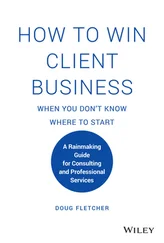
How to Win at Aptitude Tests
Volume II
By
Iain Maitland

Cover
Title Page How to Win at Aptitude Tests Volume II By Iain Maitland
Introduction Introduction Whether you are looking for a new job or for a promotion, you may find yourself being asked to take an aptitude test. Not surprisingly, you will want to know as much as possible about these tests. What are they? What do they involve? How can I prepare properly, and succeed? This book answers these questions, and many more. Chapter 1 ‘Understanding Aptitude Tests’ discusses why tests are used during recruitment, transfer and promotion procedures, and sets out with examples the different types of test that exist, paying particular attention to those for verbal, non-verbal, numerical and spatial ability. It also explains how to prepare for these tests, which mainly involves practising on similar materials under comparable test conditions, and how to sit them successfully. Chapters 2, 3, 4 and 5 look at each of the leading types of aptitude questions in turn: verbal, non-verbal, numerical and spatial ability. The key characteristics of those questions are detailed and supported by as wide a range of examples as you are likely to face. You can read through these questions for information purposes or even use them as mock tests, subsequently referring to the answers that follow. It is up to you. Chapter 6 lists the answers to all of the questions that were given in Chapters 2, 3, 4 and 5. These answers and, where appropriate, the accompanying explanations not only help you to solve the questions but also to gain a better understanding of them. Read this chapter carefully. Written in a down-to-earth, authoritative style and supported by illustrations, model questions and answers, tactical tips and chapter summaries, this book contains everything you need to know about aptitude tests, and more. It makes essential reading for anyone who wants to be offered that job, transfer or promotion.
1 Understanding Aptitude Tests 1 Understanding Aptitude Tests So what exactly is an ‘aptitude test’? In theory, it can be defined as ‘a process whereby a person’s general intelligence and/or specific abilities are assessed objectively under controlled conditions’. In practice, it usually involves a person sitting at a desk providing written answers to a set number of multiple-choice questions in a relatively short period of time. Such tests are used with increasing frequency nowadays, as part of firms’ recruitment, transfer and promotion procedures. If you are going to have to tackle an aptitude test (or a series of tests) then you must discover as much as possible about them – in particular, why they are used, the different types of aptitude test that exist, and how to prepare for and sit them successfully.
Using Tests Using Tests All types of businesses – large and small, and across many and varied trades and industries – now utilize aptitude tests to help them select the right people for jobs within their organizations. The reasons why tests are used more and more often these days can be understood by considering their benefits. Aptitude tests have drawbacks, too, which we shall also examine.
Types of Aptitude Test Types of Aptitude Test ‘General aptitude’ tests, also known as ‘general intelligence’ and ‘mental ability’ tests, measure a candidate’s basic intelligence, often in terms of verbal, non-verbal, numerical and spatial abilities. With a mix of words, symbols, numbers and shapes, the candidate may be asked to find a missing word (TEA____BOARD) , continue a series of numbers (4, 9, 19, 39, ____) or do something similar. A set number of questions is usually tackled in a given period, perhaps twenty minutes. ‘Specific aptitude’, or ‘special ability’ tests, look at a candidate’s particular talents, more often than not specific verbal, non-verbal, numerical and spatial abilities, possibly in such areas as spelling, verbal checking and numerical estimation. As examples, a report may need to be studied for spelling mistakes, a handwritten draft and its corresponding typed letter checked for errors and a set of figures for a sales projection added up and estimated totals provided for each of them. Once more, a number of questions will have to be answered in a short space of time, perhaps up to thirty minutes. The best way of gaining a fuller understanding of aptitude tests is to contemplate: • verbal ability questions • non-verbal ability questions • numerical ability questions • spatial ability questions.
Verbal Ability Questions
Preparing for Tests
Sitting Tests
Summary
2 Verbal Ability Questions
Characteristics
Finding a Missing Word
Identifying the Odd Word Out
Spelling
Word Meanings
Verbal Checking
Summary
3 Non-verbal Ability Questions
Characteristics
Matching Symbols
Spotting the Odd Symbol Out
Continuing a Series of Symbols
Summary
4 Numerical Ability Questions
Characteristics
Adding and Subtracting
Multiplying and Dividing
Fractions and Percentages
Continuing a Series of Numbers
Numerical Awareness
Numerical Estimation
Numerical Checking
Summary
5 Spatial Ability Questions
Characteristics
Fitting Shapes Together
Creating Solid Objects
Unfolding Solid Objects
Summary
6 The Answers
1: Verbal Ability Answers
2: Non-verbal Ability Answers
3: Numerical Ability Questions
4: Spatial Ability Answers
Appendix 1: Useful Contacts
Appendix 2: Further Reading
Acknowledgements
Also by Thorsons
Copyright
About the Publisher
Whether you are looking for a new job or for a promotion, you may find yourself being asked to take an aptitude test. Not surprisingly, you will want to know as much as possible about these tests. What are they? What do they involve? How can I prepare properly, and succeed? This book answers these questions, and many more.
Chapter 1 ‘Understanding Aptitude Tests’ discusses why tests are used during recruitment, transfer and promotion procedures, and sets out with examples the different types of test that exist, paying particular attention to those for verbal, non-verbal, numerical and spatial ability. It also explains how to prepare for these tests, which mainly involves practising on similar materials under comparable test conditions, and how to sit them successfully.
Chapters 2, 3, 4 and 5 look at each of the leading types of aptitude questions in turn: verbal, non-verbal, numerical and spatial ability. The key characteristics of those questions are detailed and supported by as wide a range of examples as you are likely to face. You can read through these questions for information purposes or even use them as mock tests, subsequently referring to the answers that follow. It is up to you.
Chapter 6 lists the answers to all of the questions that were given in Chapters 2, 3, 4 and 5. These answers and, where appropriate, the accompanying explanations not only help you to solve the questions but also to gain a better understanding of them. Read this chapter carefully.
Читать дальше














